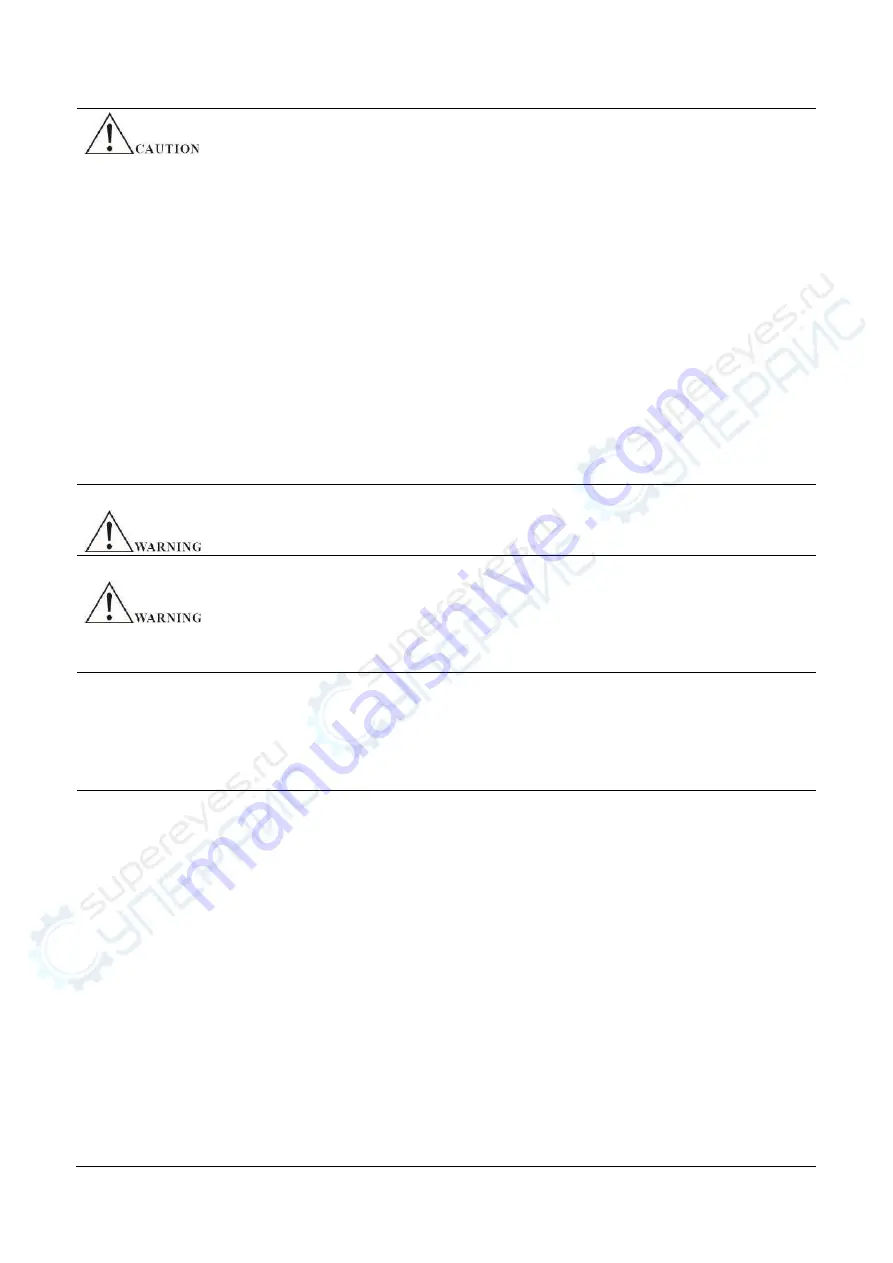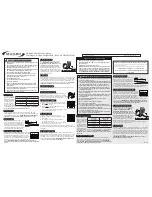
III
Safety Guidelines
Before plugging into local AC mains, check and make sure that the output voltage is
compatible to the load. (It is suggested to disconnect a load before plugging into local
AC mains.)
Do not use this instrument near water.
Do not operate or touch this instrument with wet hands.
Do not open the casing of the instrument when it is connected to AC mains.
The max. output voltage of the instrument may be over 60VDC, avoid touch the metal
contact part of the output terminals.
Do not use the instrument in an atmosphere which contains sulfuric acid mist or other
substances which cause corrosion to metal.
Do not use the instrument in a dusty place or a highly humid place as such will cause
instrument reliability degradation and instrument failures.
Install the instrument in a place where is free from vibration.
Install the instrument in a place where the ambient temperature is in range of
-10~70
℃
.
Note that the instrument operation may become unstable if it is operated in
an ambient temperature exceeding the range of 0~40
℃
Power supply
AC Input voltage: 110V/220V
±10%, 50/60Hz
Connect the protective grounding conductor of the AC power cord to an earth ground to
avoid electrical shock.
Fuse
Fuse type: please refer to section 5.2 for details.
Make sure the correct type of fuse is installed before power up.
Replace the AC fuse with the same type and rating as the original fuse.
Disconnect the power cord before fuse replacement.
Make sure the cause of fuse blowout is fixed before fuse replacement.
Cleaning
Disconnect the power cord before cleaning.
Use a soft cloth dampened in a solution of mild detergent and water. Do not
spray any liquid.
Do not use chemicals or cleaner containing harsh material such as benzene,
toluene, xylene, and acetone.
Operation environment
Location: indoor, no direct sunlight, dust free, almost non-conductive pollution (note
below).
Relative humidity: <80%
Altitude: <2000m
Temperature: 0
℃
~ 40
℃
(Pollution Degree) EN 61010-1:2001 specifies the pollution degrees and their requirements
as follows. The instrument falls under degree 2.
Pollution refers to “addition of foreign matter, solid, liquid, or gaseous (ionized gases), that
may produce
a reduction of dielectric strength or surface resistivity”.
Pollution degree 1: No pollution or only dry, non-conductive pollution occurs. The
pollution has no influence.
Pollution degree 2: Normally only non-conductive pollution occurs. Occasionally, however,
a temporary conductivity caused by condensation must be expected.
Pollution degree 3: Conductive pollution occurs, or dry, nonconductive pollution occurs





































